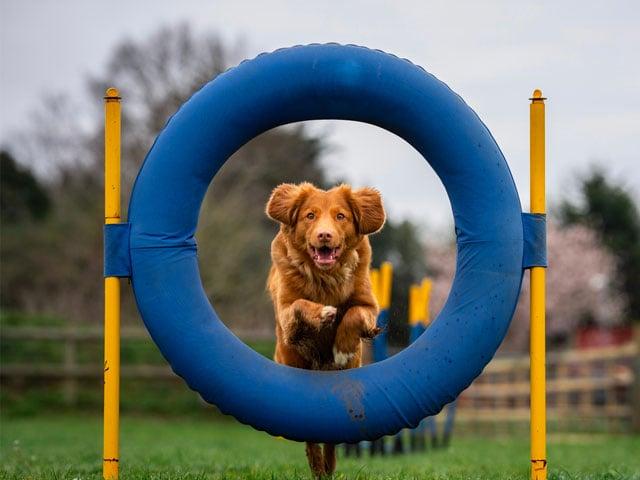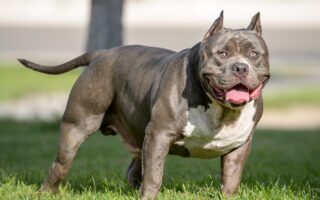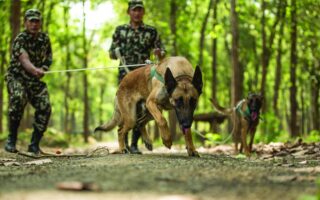Unleashing Potential: The Art of Hooper’s Dog Training
In the dynamic world of canine companionship, training methods have evolved to meet the diverse needs of our furry friends. Among these innovative approaches, Hooper’s Dog Training stands out as a unique blend of agility, obedience, and fun. This method not only enhances the bond between owner and dog but also promotes mental stimulation and physical fitness for our four-legged allies. With its focus on creating a positive, engaging environment, Hooper’s training offers a refreshing alternative to traditional obedience classes. Join us as we explore the principles behind this captivating training style, its benefits for dogs of all ages, and how it can transform everyday interactions into exciting, cooperative experiences. Whether you’re a seasoned trainer or a curious pet owner, this journey into the world of Hooper’s Dog Training promises insights that can elevate your dog’s skill set and deepen your connection.
Table of Contents
- Understanding the Principles of Hoopers Dog Training
- Essential Equipment and Setup for Hoopers Training
- Techniques for Enhancing Communication and Bonding
- Common Challenges and Solutions in Hoopers Training
- Q&A
- Future Outlook
Understanding the Principles of Hoopers Dog Training
Hoopers dog training is rooted in a series of principles designed to foster effective communication between the handler and their canine companion. At its core, this training approach emphasizes positive reinforcement, ensuring that dogs learn through rewards rather than punishment. Handlers guide their dogs through a specialized course composed of hoops, tunnels, and various obstacles, challenging the animals both mentally and physically. The primary goal is to cultivate a strong bond built on trust and collaboration, allowing dogs to explore their environment while mastering essential skills.
Central to this training methodology are a few key elements:
- Focus and Attention: Dogs are taught to maintain eye contact and stay engaged with their handlers.
- Independence: Unlike traditional obedience training, hoopers allows dogs the freedom to make their own choices.
- Flow and Rhythm: Dogs learn how to navigate courses fluidly, enhancing their agility and confidence.
A successful hoops training session often incorporates a balance of fun and discipline, making it enjoyable for both the dog and the owner. Here is a simple table highlighting the benefits of this training method:
| Benefit | Description |
|---|---|
| Bonding | Strengthens the relationship through teamwork and mutual respect. |
| Mental Stimulation | Encourages problem-solving skills and cognitive engagement. |
| Physical Fitness | Promotes exercise through active obstacle navigation. |
Essential Equipment and Setup for Hoopers Training
To ensure effective hoops training for your dog, investing in the right equipment is essential. Start with hoops that are durable and easy for your dog to navigate. Choose a variety of sizes to challenge your dog as they progress. Incorporating training cones can help create structured courses for your dog to maneuver through. Essential items also include a clicker for positive reinforcement, a treat pouch for easy access to rewards, and an elastic leash that allows for freedom of movement without compromising control.
Setting up your training space is just as important as the equipment itself. Designate a safe area, preferably with a flat surface, to minimize distractions. Consider the following elements for an optimal training environment:
- Clearly marked training boundaries
- A shaded area for breaks
- Visible paths for flowing movements
Here’s a simple overview of what to include in your setup:
| Equipment | Purpose |
| Hoops | Jumping and weaving |
| Training Cones | Course structure |
| Clicker | Positive reinforcement |
| Treat Pouch | Easy rewards access |
| Elastic Leash | Controlled freedom |
Techniques for Enhancing Communication and Bonding
Building a strong relationship with your dog goes beyond teaching basics; it requires a foundation of effective communication. One crucial technique is positive reinforcement, which encourages good behavior by rewarding your dog with treats, praise, or playtime. This not only enhances learning but also reinforces trust and understanding. Additionally, using consistent commands helps your dog associate specific cues with actions. When you use the same phrases during training sessions, your dog becomes more confident and sharper in response, paving the way for a deeper connection.
Engaging in activities together can further strengthen your bond. Activities such as obstacle courses, frisbee, or hoopers training allow for interactive play and teamwork, making learning enjoyable. Dogs thrive on routine, so incorporating scheduled training sessions into daily life creates anticipation and excitement. Here are a few activities to consider:
- Agility courses: Stimulates both physical and mental capabilities.
- Interactive puzzle toys: Develops problem-solving skills.
- Daily walks: Enhances socialization and bonding time.
Common Challenges and Solutions in Hoopers Training
Training your dog to navigate through hoops can present a range of hurdles that may challenge even the most patient trainers. One common issue is lack of focus. Dogs might become distracted by their surroundings, making it difficult for them to concentrate on the task at hand. To combat this, ensure a controlled training environment with minimal distractions. Using a clear command along with enticing treats can also help redirect their attention back to the task. Additionally, regular practice in different settings can enhance their adaptability, allowing them to perform better under varied circumstances.
Another challenge often faced during hoop training is overexcitement. Dogs may become overly enthusiastic, leading to frantic behavior that can be counterproductive. It’s important to teach your dog to remain calm and composed. One effective solution is to incorporate calm periods into the training routine. For example, before starting the hoop exercises, spend a few moments in a sit or down position. Setting a routine that balances energy with relaxation will help your dog understand when to work and when to chill. Regular breaks during sessions can also provide them the opportunity to calm down before continuing the training.
Q&A
Q&A: Exploring Hoopers Dog Training
Q1: What is Hoopers dog training?
A1: Hoopers dog training is a fun and engaging canine sport that emphasizes teamwork and communication between the handler and their dog. It involves guiding the dog through a series of ground-based obstacles, including hoops, tunnels, and barrels, without the need for direct leash handling. The objective is for the dog to navigate the course by responding to verbal commands and body language, fostering a strong bond between the dog and handler.
Q2: What are the benefits of Hoopers dog training for both dogs and handlers?
A2: Hoopers offers numerous benefits for both dogs and their handlers. For dogs, it provides mental stimulation, physical exercise, and the opportunity to engage in a structured activity that promotes focus and discipline. For handlers, Hoopers enhances communication skills, helps improve handling techniques, and strengthens the overall relationship with their dog. Additionally, since the activity is low-impact, it is suitable for dogs of various ages and fitness levels.
Q3: How can I get started with Hoopers dog training?
A3: To get started with Hoopers, you can seek out local training clubs or classes that specialize in the sport. Joining a class is a great way to learn the fundamentals, proper techniques, and safety measures with the guidance of a qualified instructor. Many clubs also host workshops and fun matches for beginners. If classes are not available in your area, you can set up a small course at home using everyday items like hula hoops and tunnels to familiarize your dog with the obstacles.
Q4: What skills do dogs need to have before starting Hoopers training?
A4: While Hoopers training can accommodate dogs of various skill levels, having some basic obedience skills is beneficial. Dogs should be familiar with commands such as sit, stay, come, and lie down. Recall is especially important since most courses require the dog to navigate independently. Additionally, the dog should be comfortable around people and other dogs to ensure a positive training environment.
Q5: Is Hoopers dog training suitable for all dog breeds?
A5: Yes, Hoopers dog training is suitable for dogs of all breeds and sizes! The sport can be tailored to accommodate various physical abilities and temperaments, making it accessible for everyone. Whether a high-energy working breed or a more laid-back companion, any dog can enjoy the mental and physical challenges of Hoopers. It’s important, however, to consider the individual dog’s health and preferences when participating.
Q6: How can I measure my dog’s progress in Hoopers training?
A6: Progress in Hoopers can be measured in several ways, including the dog’s confidence and enthusiasm in navigating the obstacles, their speed and accuracy in completing the course, and their responsiveness to commands. Keeping track of each training session’s achievements, including both small and large milestones, can help evaluate improvement. Trial participation is another excellent way to gauge progress, as it provides a structured environment to showcase skills.
Q7: Can Hoopers dog training be done at home?
A7: Absolutely! You can set up a mini Hoopers course at home using simple, safe materials. Start with one or two hoops, a tunnel, and barrels or other objects for weaving. Gradually introduce your dog to different obstacles and commands. Creating a fun and positive atmosphere at home can enhance your dog’s learning experience and make training a rewarding activity for both of you.
Q8: Are there competitive opportunities for Hoopers dog training?
A8: Yes, there are numerous competitive opportunities in Hoopers! Many organizations host workshops, trials, and championships across various levels, from beginners to advanced competitors. Participating in competitions allows teams to showcase their skills, experience the excitement of the sport, and connect with other dog handlers. It’s also a wonderful way to motivate both you and your dog as you set goals and work towards them together!
—
Feel free to dive deeper into the world of Hoopers training, and discover how it can enrich both your life and your dog’s!
Future Outlook
As we draw the curtain on our exploration of Hooper’s Dog Training, it becomes clear that this unique method transcends the traditional boundaries of canine education. By focusing on teamwork, communication, and the joyful bond between handler and dog, this training approach fosters not just a well-behaved pet, but a loyal companion who thrives in both body and spirit.
Whether your four-legged friend is a spirited puppy or a seasoned adult, the principles of Hooper’s can enrich your training journey, making each session an opportunity for growth and connection. As you venture into the world of obedience and agility, remember that the heart of this practice lies in the shared experience and the laughter along the way.
So, leash up, gather the treats, and embark on this rewarding path—it’s not just about the destination, but the beautiful moments you’ll create together with your dog. Happy training!



